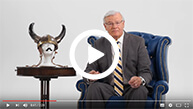Excerpt When looking into loan options, many retirees consider a reverse mortgage. The first question they often ask themselves is, “What is my reverse mortgage eligibility?” The answer is, eligibility depends on a range of considerations, including your age, and the location and condition of your home. Retirees are often surprised at what reverse mortgage eligibility doesn’t involve, such as your income level.
For Canadians aged 55 and over, managing a traditional mortgage in retirement can be increasingly difficult — especially as interest rates rise and fixed terms expire. Many homeowners who secured low rates during the COVID-19 pandemic are now facing significantly higher monthly payments as their five-year fixed mortgages come due. For those looking to stay … Continued
Many Canadian homeowners approaching retirement wonder “Are Reverse Mortgages safe in Canada?” – especially after hearing troubling stories from the US. But why are reverse mortgages safe in Canada? Let’s take a closer look at those US reverse mortgage stories and why they couldn’t happen here. We’ll also look at the laws in place to protect Canadian reverse mortgage customers, and we’ll answer the questions, “are reverse mortgages safe for seniors?” and “is a CHIP reverse mortgage safe?”
A common question among older Canadian homeowners is: should you pay off your mortgage before retirement? When home prices were considerably lower, it was easier for homeowners to pay off their mortgages before they retired, and for many people “burning their mortgage” was an important step towards financial independence.
Reverse mortgages have become extremely popular in Canada. Canadians now borrow billions of dollars in reverse mortgages, and in 2024, reverse mortgage borrowing increased by over 39% compared to 2022. In spite of this, reverse mortgages are still not very well understood in Canada. Retirees often ask themselves: does a reverse mortgage ever make sense? Are reverse mortgages worth it? And when is a reverse mortgage a good idea?
Financial scams and fraud are a big problem in Canada. According to the Canadian Anti-Fraud Centre, in 2023 there were over 63,000 reports of fraud, costing its victims almost $570 million.
Increasingly, those frauds have involved mortgages, including a growth in reverse mortgage scams. With the increase in popularity of reverse mortgages as a useful legitimate and beneficial loan option for many retirees (in 2023, reverse mortgages grew by 28% year-over-year), it didn’t take long for financial fraudsters to come up with reverse mortgage scams.


















